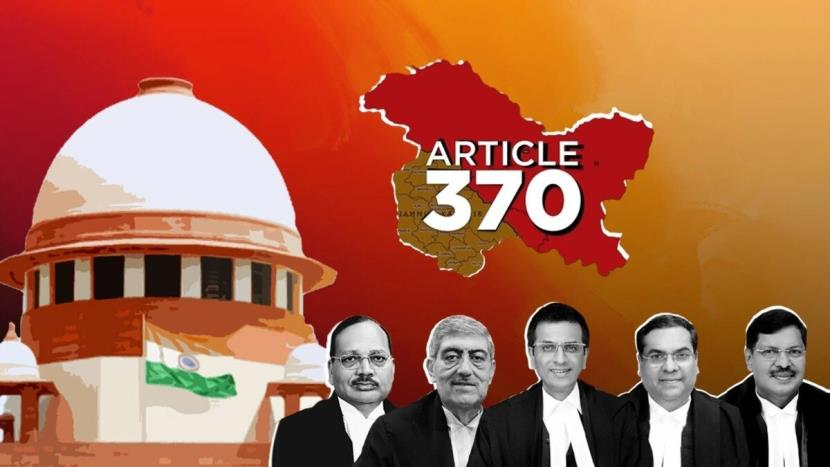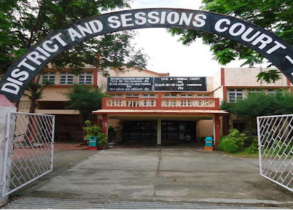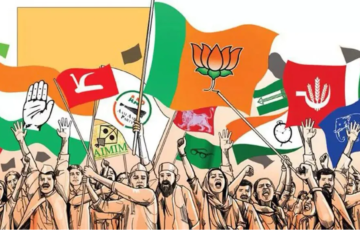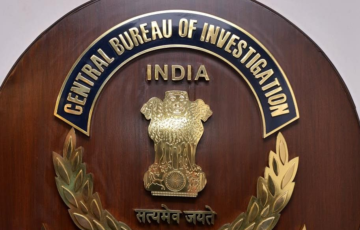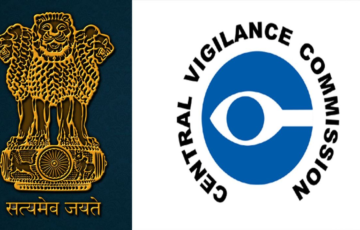SPECIAL PROVISIONS FOR SOME STATES
Introduction
- The concept of Special Category Status, introduced by the 5th Finance Commission in 1969, was a pivotal step in recognizing historical disadvantages faced by certain states in India. Its primary aim was to provide preferential treatment to these states through central support and tax benefits, ensuring their socio-economic development. Initially, only three states – Assam, Nagaland, and Jammu and Kashmir – were granted this special status during the 4th 5-Year Plan.
- Over time, the list of states enjoying Special Category Status expanded. From 1974 to 1979, five more states, namely Himachal Pradesh, Manipur, Meghalaya, Sikkim, and Tripura, received this recognition. In 1990, the count reached ten with the inclusion of Arunachal Pradesh and Mizoram. Further, in 2001, Uttarakhand was also granted Special Category Status.
- It’s important to note that the landscape of special status has evolved over time, and the constitutional status of Jammu and Kashmir changed significantly in 2019 when Article 370 was revoked. The concept of Special Category Status remains significant in addressing regional disparities and promoting balanced development in India.
| Special Category Status |
| The concept of “special category status” for Indian states is not formally granted by the National Development Council (NDC). It is, however, an important issue in Indian federal politics and economic planning. Special category status is usually sought by certain states that face a combination of socio-economic and geographical disadvantages, and it provides these states with special financial assistance from the central government.
Criteria for granting special category status for states in India:
The National Development Council (NDC) is a forum for discussion and consensus-building on development-related issues between the central government and state governments in India. While it doesn’t officially grant special category status, it plays a role in discussions related to financial assistance and support for states facing these challenges. The actual decision to grant special category status lies with the Planning Commission (now replaced by the NITI Aayog) and the central government. This decision is based on recommendations and consultations with the concerned state government and various relevant criteria. |
Constitutional Provision for Some States
- Article 371 to 371-J in Part XXI of the Indian Constitution indeed deal with special provisions for certain states. These provisions were incorporated through various constitutional amendments, mainly in the context of the reorganization of states and Union Territories in India. These articles are designed to address the unique historical, social, and political circumstances of specific states and regions. Some of the key provisions of the several states are as follows:
- Article 371A – Nagaland: This provision was added to respect the unique history and culture of Nagaland. It recognizes the significance of customary law and practices for the Naga tribes. It gives the state of Nagaland significant autonomy in administering local laws, including civil and criminal justice, without undermining the national legal system.
- Article 371B – Assam: Article 371B grants special provisions for Assam, especially for the hill districts. It includes provisions for a legislative assembly for the hill districts and defines the powers and functions of the Governor. It also establishes a regional committee to address matters concerning the administration of tribal areas in Assam.
- Article 371C – Manipur: This article provides for a special arrangement for the Hill Areas in the state of Manipur. It mandates that the President should annually review the administration of the Hill Areas in Manipur and the reports of this review are to be laid before the state assembly.
- Article 371D – Andhra Pradesh: This provision was introduced during the formation of Andhra Pradesh from the separation of Telangana. It ensures equitable opportunities for public employment and education in Andhra Pradesh. It specifies that local candidates should be given preference in direct recruitment to public services, and the President is empowered to provide further special provisions for the protection of interests of different parts of the state.
- Article 371F – Sikkim: This article pertains to the special provisions for Sikkim, which joined the Indian Union in 1975. It defines the legislative powers of the state assembly and provides for the Governor’s special responsibility regarding the law and order situation in Sikkim.
- Article 371G – Mizoram: It deals with various matters including religious or social practices, customary law, and administration of civil and criminal justice for the Mizos.
- Article 371H – Arunachal Pradesh: This article contains provisions for the state of Arunachal Pradesh, primarily concerning the responsibility of the Governor for law and order.
- Article 371I – Goa: This provision addresses the official language in Goa. It allows the continued use of the Marathi language in the state along with Konkani and provides for bilingual use in the legislature and administrative work.
- Article 371J – Karnataka: Article 371J deals with special provisions for Hyderabad-Karnataka region in Karnataka. It establishes a development board for the region to address issues related to social and economic development.
- These provisions are aimed at preserving the unique cultural, social, and historical aspects of these states and ensuring their equitable development. They provide certain levels of autonomy and special treatment to these regions to address their specific needs. These articles reflect the federal and diverse nature of the Indian Union. It’s important to note that these provisions are not uniform, and they vary from state to state based on the specific historical and sociopolitical context of each region.
Reason for Granting Special Status
- The special provisions in the Indian Constitution for certain states are rooted in several key ideas and objectives:
- Meeting Aspirations of Backward Regions: Many of these provisions are aimed at meeting the aspirations and addressing the development needs of backward and underdeveloped regions within a state. By providing special status or autonomy, these regions can receive the necessary support for socio-economic development.
- Addressing Law and Order Issues: In cases where there are disturbances or challenges related to law and order, special provisions may be enacted to give the central government or the Governor a greater role in maintaining peace and stability in specific areas or districts within a state. This ensures that law and order issues are effectively addressed.
- Protection of Tribal Interests: The protection of the cultural, social, economic, and political interests of tribal people is a fundamental objective of these provisions. They recognize the unique identity and way of life of tribal communities and aim to safeguard their rights and traditions.
- Protecting Local Interests: These provisions are also designed to protect the interests of local populations, whether they are linguistic or cultural minorities or residents of particular regions within a state. They often include safeguards to ensure equitable opportunities for public employment and education for local candidates.
- In essence, these special provisions in the Constitution aim to strike a balance between the principles of federalism and the need to address regional disparities, cultural diversity, and security concerns within the Indian Union. They reflect India’s commitment to respecting the rights and aspirations of its diverse population while maintaining national unity and integrity. These provisions are an acknowledgment of the unique historical, cultural, and socio-economic conditions in various regions and states of India, and they provide a legal framework to address these specific conditions.
Benefits Under the Special Category Status
- Financial Assistance for Centrally Sponsored Schemes: The central government often provides financial assistance to states for centrally sponsored schemes. For special category states, the central government covers 90 percent of the expenditure on these schemes, while the remaining 10 percent is provided as a zero-interest loan. In contrast, general category states usually receive a 70 percent loan and 30 percent grant.
- Example: Let’s consider the state of Himachal Pradesh, which is a special category state. When implementing a centrally sponsored scheme, if the total cost is, say, ₹100, the central government provides ₹90 as a grant to the state, and the remaining ₹10 is given as a zero-interest loan. This enables the state to undertake development projects with minimal financial burden.
- Preferential Treatment for Funding: Special category states often receive preferential treatment when it comes to receiving funds from the central government. This is to address the unique socio-economic and geographical challenges these states face.
- Example: States like Arunachal Pradesh, which face challenges due to their difficult terrain and low population density, receive more funding from the central government for infrastructure development, education, and healthcare. This ensures that the state can provide essential services to its residents effectively.
- Excise Duty Reductions: To attract businesses and promote industrialization in special category states, the central government may offer excise duty reductions or exemptions. This is done to stimulate economic growth and development in these regions.
- Example: The state of Uttarakhand, which has special category status, has benefited from excise duty reductions to attract industries and promote economic growth. This has led to the establishment of several manufacturing units and businesses in the state.
- Special Allocation of Federal Budget: Special category states receive a specific share of the federal government’s gross budget. While the exact percentage may vary, it’s generally around 30 percent, and this allocation is aimed at addressing the development needs of these states.
- Example: States like Jammu and Kashmir, under its previous special category status, received a specific allocation from the federal budget to address security and development needs in the region. This allocation aimed to maintain peace and spur economic growth.
- Debt-Swapping and Debt-Relief Programs: Special category states are often eligible for debt-swapping and debt-relief programs. These initiatives are designed to alleviate the financial burden on these states and improve their fiscal health by replacing high-interest loans with lower-interest loans or grants.
- Example: The state of Punjab faced a high debt burden, and a debt-relief program was initiated to swap high-interest loans with lower-interest ones. This helped reduce the financial burden on the state’s finances and improved its fiscal stability.
|
Concerns Related to Special Category Status Increased burden on Central Finances: Providing special category status to a state can put a significant strain on the central government’s finances. This is because the central government provides additional financial assistance to special category states, such as higher central share in centrally sponsored schemes and tax breaks. Pandora’s box: Granting special category status to one state can often lead to demands from other states for similar status. This can create a slippery slope and make it difficult for the central government to determine which states are truly deserving of special status. Inequitable: Some critics argue that the special category status scheme is inequitable, as it benefits some states at the expense of others. For example, states that are already relatively well-developed may be able to take advantage of the special status scheme to further their development, while less developed states may not be able to reap the same benefits. Recent Development In February 2023, the Union Finance Minister made it clear that the central government will not consider demands for special category status for any state. This decision was based on the recommendations of the 14th Finance Commission, which abolished the special category status scheme in 2015. The central government’s decision to rule out special category status has come as a blow to several states, such as Odisha, Bihar, and Andhra Pradesh, which have been pushing for the status for years. These states argue that they face unique geographical and socio-economic challenges, and that special category status would help them to bridge their development deficit. |
UPSC PREVIOUS YEAR QUESTIONS
1. If a particular area is brought under the Fifth Schedule of the Constitution of India, which one of the following statements best reflects the consequence of it? (2023)
(a) This would prevent the transfer of land of tribal people to non-tribal people.
(b) This would create a local self-governing body in that area.
(c) This would convert that area into a Union Territory.
(d) The State having such areas would be declared a Special Category State.

